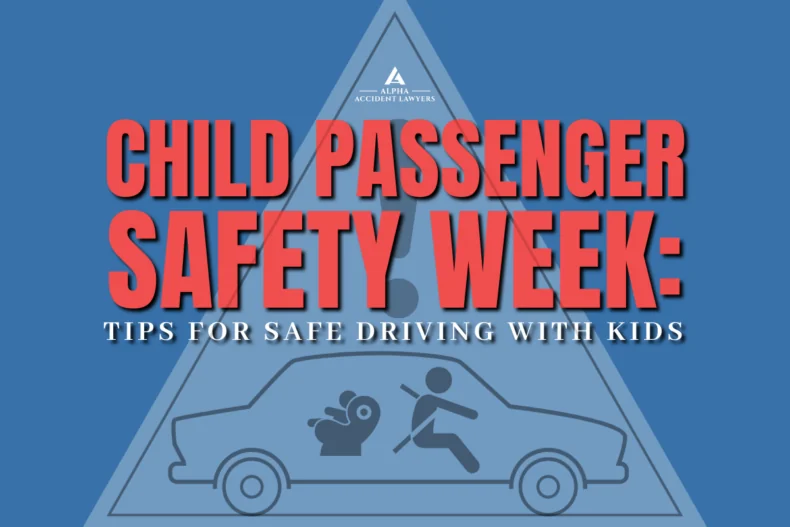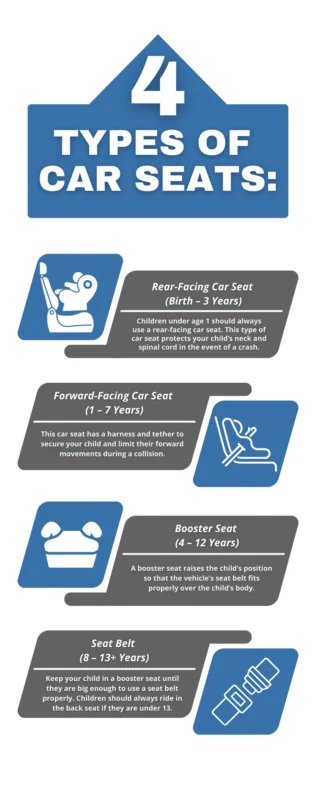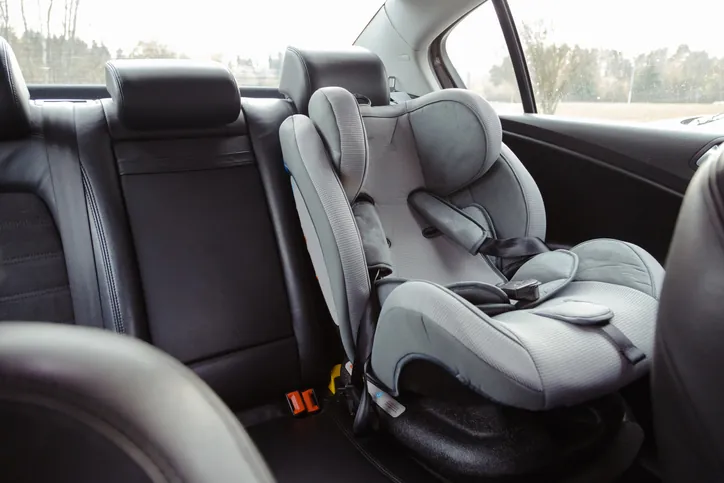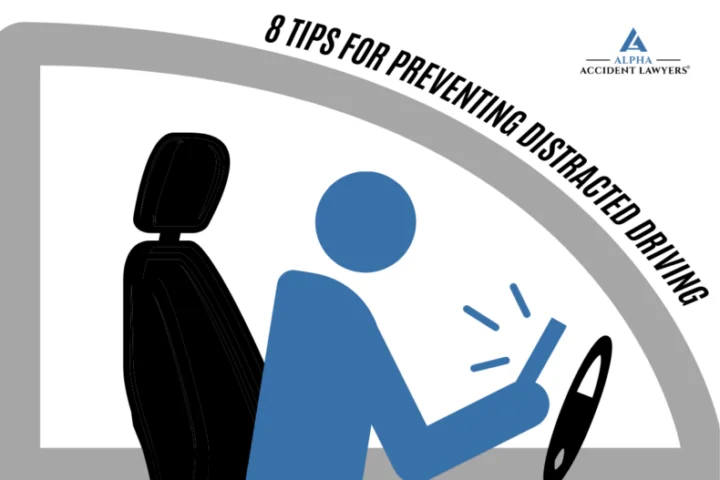Child Passenger Safety Week Safety Tips
Traveling on the road with your family can be a fun adventure, however, it’s crucial to keep kids safe in and around vehicles. It can be stressful when you’re not sure what to expect when traveling, but you can take steps to ensure that your children are properly protected in your car. Traffic accident injuries are a leading cause of preventable injuries and deaths to children in the US. According to the National Highway Traffic Safety Administration, more than 100,000 children were injured in motor vehicle crashes in 2021. It’s Child Passenger Safety Week from September 17-23. Read on to learn safe driving tips with kids.
Keep Child Passengers Safe on the Road
According to the National Safety Council, 607 children (under 13) were killed in auto accidents in 2020. Over 36% of children who suffered fatal car accident injuries were unrestrained. The best way to keep kids safe on the road is to use the correct car seat in the right way.
National Seat Check Saturday is on September 23rd. Here are tips on finding the right car seat for your child:
- Choose a car seat based on your child’s age, height, and weight.
- Review your car seat manufacturer’s instructions to ensure it is the right size for your child.
- Unfortunately, many parents install their child seats incorrectly. Check your vehicle owner’s manual for car seat installation instructions.
- Make sure the car seat fits in your vehicle properly and use it every time.
- Keep your child in the car seat for as long as the child fits within the car seat manufacturer’s requirements.
- Ensure your child is in the back seat of the vehicle through age 12.
Four Types of Car Seats
It’s crucial to choose the right car seats and boosters in order to help keep children safe. Car seats reduce an infant’s risk of fatal injury by 71%. In just 1 year, 325 children under the age of 5 were saved by car seats.
When choosing the correct car seat ensure you choose one that fits your child’s current age and size.
Rear-Facing Car Seat (Birth – 3 Years)
- Children under age 1 should always use a rear-facing car seat.
- This type of car seat cradles your child, protecting their neck and spinal cord in the event of a crash.
Forward-Facing Car Seat (1 – 7 Years)
- Once your child reaches the top height or weight limit allowed by the car seat’s manufacturer it’s best to transition to a forward-facing car seat.
- This car seat has a harness and tether to secure your child and limit their forward movements during a collision.
Booster Seat (4 – 12 Years)
- When your child reaches the top height or weight limit allowed by the manufacturer, it’s time to use a booster seat.
- A booster seat raises the child’s position so that the vehicle’s seat belt fits properly over the child’s body.
Seat Belt (8 – 13+ Years)
- Keep your child in a booster seat until they are big enough to use a seat belt correctly.
- The lap belt must lie securely across the upper thighs, not the stomach.
- The shoulder belt should lie comfortably across the shoulder and chest, not across the neck.
- Children should always ride in the back seat if they are under 13.
Older Kids Need to Be Properly Buckled Too
Child Passenger Safety Week isn’t just for infants and toddlers. Older kids also need to be properly secured when traveling in vehicles. If your child has outgrown a booster seat and meets the height and weight requirements, ensure they buckle up using the vehicle’s seat belt.
Make sure the seat belt fits your child properly. Ensure that each child has their designated seat and seatbelt. For children, this means using the appropriate car seat or booster seat until they are tall enough for the seatbelt to fit properly. Sharing seat belts is unsafe and can lead to serious injuries in case of a crash.
Tips for Driving Safe With Kids
Keeping child passengers safe isn’t just about the right car seat; it also involves safe driving practices. Here are some tips for driving safely with kids in the car:
Plan Ahead
Whether traveling or your kids are going back to school, plan your trips to coincide with their nap times or bring along snacks and entertainment to keep them occupied.
Always Buckle Up
The importance of seat belt use cannot be stressed enough. It’s one of the simplest and most effective ways to protect yourself and your child while on the road. Ensure that all passengers, including adults, are properly buckled up before you start driving.
Obey Speed Limits
Always follow posted speed limits and adjust your speed based on road conditions. Speeding increases the risk and severity of accidents.
Sit in the Back Seat
The safest place for children of all ages to ride is in the back seat of the vehicle. In the front seat, children can be seriously injured by air bags, which are designed to protect adults. The force of an airbag deployment can be deadly for young children.
Having children in the back seat can also reduce distractions for the driver, making it easier to focus on the road.
Secure Loose Objects or Gear
In addition to properly restraining passengers, it’s essential to secure loose objects or gear within the vehicle. Unsecured items can become dangerous projectiles in the event of a sudden stop or collision. Here are some tips to help prevent hazards inside your vehicle:
Use trunk space – Whenever possible, stow loose items in the trunk of the vehicle. This keeps them out of the passenger compartment.
Cargo nets or organizers – Consider using cargo nets, organizers, or storage compartments to keep items from rolling around in the back of the vehicle.
Heavy items first – When loading the trunk, place heavier items on the bottom and secure them to prevent shifting.
Childproof the interior – Ensure that toys, books, or any other objects children might bring into the car are safely stored or secured. In a crash, these items can become dangerous projectiles.
Dont Drink and Drive
Never drive under the influence of alcohol, drugs, or any substances that impair your ability to drive safely.
Avoid Distractions
Never engage in distracted driving behaviors like texting, talking on the phone, using the GPS or radio, or turning to tend to children while driving. These distractions divert your attention from the road. While it’s essential to ensure your child’s safety and comfort, avoid turning around to supervise them while driving. Pull over if necessary.
Supervise Kids in and Around Vehicles
It’s vital to supervise children in and around vehicles to prevent accidents and injuries:
- Before getting into your car, check your driveway and the area around it to ensure there are no children playing nearby.
- Educate children and raise awareness about the dangers of playing in and around cars.
- If your vehicle is equipped with a rearview camera, make use of it to check for obstacles or children behind your car.
- When walking with children in parking lots, always hold their hands or have them close by.
Never Leave Children Alone in Cars
One of the most critical safety rules to remember is never to leave children alone in cars, even for a short time. In warm weather, the temperature inside a parked car can rise rapidly, even with the windows cracked. This can lead to heatstroke, which is potentially fatal for children.
We Advocate for Auto Accident Victims
Child Passenger Safety Week serves as a reminder of the importance of child safety in vehicles. However, car accidents can happen despite our best efforts to ensure child passenger safety. If you or your child have been involved in an auto accident, it’s crucial to know that you have rights and legal options.
At Alpha Accident Lawyers we are dedicated to helping personal injury victims obtain justice. Our award-winning law firm maintains a 99% success rate and we’ve recovered millions of dollars in compensation for our clients. Call our legal team today to schedule a no-risk, free consultation.
START YOUR FREE CONSULTATION





